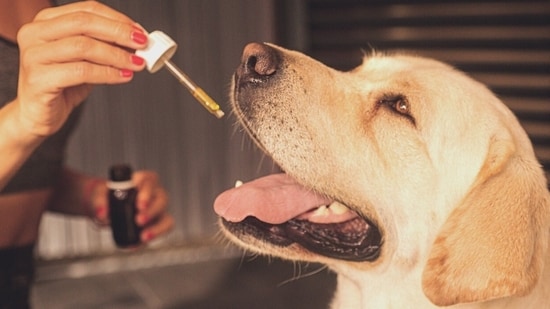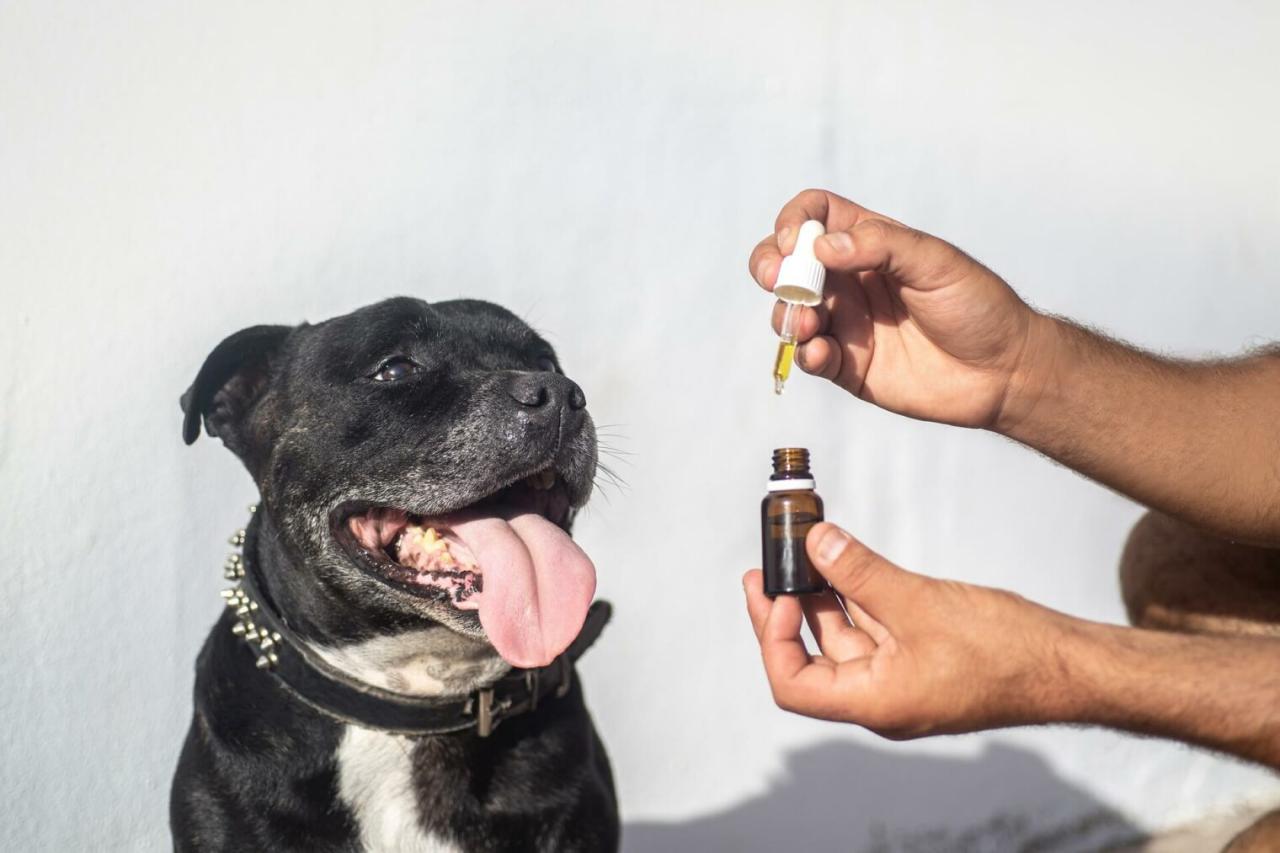The world of pet wellness has seen an explosion of interest in CBD (Cannabidiol), with products ranging from oils and treats to topicals now readily available for our beloved animal companions. Promising a myriad of benefits – from anxiety relief and pain management to seizure control and anti-inflammatory effects – CBD has captured the attention of countless pet owners seeking natural, alternative solutions for their furry friends’ ailments. However, amidst the widespread enthusiasm and anecdotal evidence, a critical question remains: What does the science truly say about CBD for pets? Is it a miracle cure, a benign supplement, or potentially risky?This comprehensive article aims to debunk common myths surrounding CBD for pets, separate scientific facts from marketing hype, explore its purported benefits and potential risks, discuss current research and regulatory landscapes, and provide essential guidance for pet owners considering its use. Navigating this rapidly evolving frontier requires a clear understanding to make informed decisions that prioritize our pets’ safety and well-being.
What Is It and What It Isn’t

To grasp the complexities of CBD for pets, it’s crucial to first understand what CBD is and how it relates to the cannabis plant.
A. Cannabidiol (CBD) Defined
- A Cannabinoid: CBD is one of over 100 chemical compounds known as cannabinoids found in the Cannabis sativa plant.
- Non-Psychoactive: Unlike its well-known counterpart, Tetrahydrocannabinol (THC), CBD is not psychoactive. This means it does not produce the “high” associated with marijuana.
- Mechanism of Action: CBD interacts with the endocannabinoid system (ECS), a complex cell-signaling system present in all mammals (including humans and pets). The ECS plays a crucial role in regulating a wide range of physiological processes, including mood, sleep, appetite, pain, and immune response. CBD is thought to influence the ECS by interacting with its receptors (CB1 and CB2) and affecting the production or breakdown of natural endocannabinoids.
B. Hemp vs. Marijuana: The Crucial Distinction
Both hemp and marijuana are varieties of the Cannabis sativa plant, but they are legally and chemically distinct, primarily based on their THC content.
- Hemp: Legally defined as Cannabis sativa plants containing 0.3% or less THC by dry weight. Most CBD products for pets (and humans) are derived from hemp. This low THC content ensures no psychoactive effects.
- Marijuana: Cannabis sativa plants containing more than 0.3% THC. These plants are cultivated for their psychoactive properties and typically have higher CBD content as well, but their high THC content makes them unsafe and illegal for most pet use.
C. Types of CBD Extracts
- Full-Spectrum CBD: Contains all compounds found in the hemp plant, including CBD, other cannabinoids (CBN, CBG, etc.), terpenes, flavonoids, and trace amounts of THC (less than 0.3%). The “entourage effect” theory suggests these compounds work synergistically to enhance therapeutic benefits.
- Broad-Spectrum CBD: Contains multiple cannabinoids and terpenes from the hemp plant but has had all detectable THC removed. Offers some benefits of the entourage effect without the risk of THC.
- CBD Isolate: Pure CBD, isolated from all other compounds in the hemp plant. Contains 99% CBD and no other cannabinoids or terpenes. It has no entourage effect.
For pets, it is generally recommended to use Broad-Spectrum or CBD Isolate products to minimize or completely eliminate THC exposure, as THC can be toxic to animals.
Purported Benefits of CBD for Pets: What Anecdotal Evidence Suggests
Pet owners and some holistic veterinarians report a range of positive effects from CBD, leading to its widespread popularity. These are largely based on observational accounts and preliminary studies, not yet extensive clinical trials.
A. Anxiety and Stress Reduction
Many owners report CBD helps calm anxious pets, particularly those with:
- Separation Anxiety: Reducing pacing, vocalization, or destructive behaviors when left alone.
- Noise Phobias: Lessening fear responses to thunderstorms, fireworks, or loud noises.
- Situational Anxiety: Calming pets during vet visits, grooming, or travel.
B. Pain Management and Anti-Inflammatory Properties
CBD is widely touted for its potential to alleviate pain, especially chronic pain associated with:
- Osteoarthritis: Reducing joint inflammation and stiffness, improving mobility.
- Post-Surgical Pain: Aiding in recovery and comfort after operations.
- Chronic Ailments: Providing relief for various inflammatory conditions.
C. Seizure Control
Some anecdotal reports suggest CBD can reduce the frequency and severity of seizures in epileptic pets, particularly those refractory to conventional anti-epileptic drugs.
D. Nausea and Appetite Stimulation
CBD may help soothe digestive upset and stimulate appetite, beneficial for pets undergoing chemotherapy or those with chronic illnesses.
E. General Wellness and Homeostasis
By interacting with the ECS, CBD is believed to help maintain overall balance in the body, potentially supporting immune function and general vitality.
What the Science Says
While anecdotal evidence is compelling, robust scientific research on CBD for pets is still in its early stages. Most published studies are preliminary, small-scale, or funded by industry, highlighting the need for more independent, large-scale, placebo-controlled clinical trials.
A. Key Research Findings
- Osteoarthritis in Dogs: Several promising studies (e.g., Cornell University, Colorado State University) have shown that CBD significantly reduces pain and increases activity in dogs with osteoarthritis, with minimal side effects.
- Epilepsy in Dogs: A Colorado State University study indicated that 89% of dogs receiving CBD in a clinical trial had a reduction in seizure frequency. While promising, more research is needed to determine optimal dosing and long-term efficacy.
- Anxiety: Research specifically on CBD’s efficacy for anxiety in pets is less extensive than for pain, but ongoing studies are exploring this area. Initial findings are mixed or inconclusive, suggesting anxiety is a more complex issue.
- Safety and Pharmacokinetics: Studies have largely confirmed that CBD is generally well-tolerated by dogs and cats, with common side effects being mild (see below). Research is also elucidating how CBD is absorbed, metabolized, and eliminated in pets.
B. Gaps in Research
- Optimal Dosing: Precise, scientifically validated dosing guidelines for various conditions and species are still lacking.
- Long-Term Effects: Comprehensive studies on the long-term safety and efficacy of chronic CBD administration are needed.
- Drug Interactions: More research is required on how CBD interacts with conventional veterinary medications.
- Specific Conditions: While pain and seizures have received some attention, robust research for other purported benefits (e.g., cancer, gastrointestinal issues, allergies) is sparse.
- Species Differences: Most research focuses on dogs; less is known about optimal dosing and effects in cats, birds, or exotic pets.
Potential Risks and Side Effects

While generally considered safe, CBD is not without potential risks or side effects, especially if products are unregulated or incorrectly dosed.
A. Common Side Effects (Mild)
- Drowsiness/Lethargy: Especially with higher doses.
- Dry Mouth/Increased Thirst: CBD can decrease saliva production.
- Lowered Blood Pressure: Can cause lightheadedness or dizziness, especially if the dose is too high.
- Diarrhea or Vomiting: Often due to the carrier oil (e.g., too much MCT oil) or too high a dose.
- Elevated Liver Enzymes: Some studies have shown transient elevations in liver enzymes, particularly at higher doses. While typically not clinically significant, it warrants veterinary monitoring, especially for pets with pre-existing liver conditions.
B. Risks Associated with Poor Quality Products
- Inaccurate Labeling: A significant concern in the unregulated market. Products may contain less CBD than advertised, more THC than legally allowed (potentially leading to toxicity), or contaminants.
- Contaminants: Pesticides, heavy metals, solvents, or mold from poor cultivation or extraction processes.
- THC Toxicity: Even small amounts of THC can be toxic to pets, causing lethargy, ataxia (loss of coordination), vomiting, tremors, or even seizures. Pets are far more sensitive to THC than humans.
C. Drug Interactions
CBD is metabolized by the liver’s cytochrome P450 enzyme system, the same pathway used by many prescription medications. This means CBD can potentially alter the metabolism of other drugs, leading to either increased side effects or decreased efficacy of those medications. Always consult your vet before combining CBD with other drugs.
Regulatory Landscape
The legal and regulatory status of CBD products for pets is complex and varies significantly by country and even within regions (e.g., by state in the U.S.).
A. Federal vs. State/Local Laws (U.S. Context)
- 2018 Farm Bill: Federally legalized hemp (cannabis with <0.3% THC), making hemp-derived CBD legal for cultivation and sale. However, the FDA retains authority over products containing cannabis and CBD.
- FDA Stance: The FDA has not approved any CBD product for animal use and considers it illegal to add CBD to animal food or to market CBD products as dietary supplements for animals. They also issue warning letters to companies making unproven health claims.
- State-Specific Regulations: Despite the federal stance, many states have enacted laws allowing veterinarians to discuss or even recommend CBD, and have established regulations for CBD product manufacturing and sale for animals.
B. Global Variations
Regulations differ widely internationally. Some countries have clear legal frameworks for pet CBD, while others maintain strict prohibitions or have ambiguous rules.
C. Lack of Standardization
The absence of comprehensive federal regulation has led to a largely unregulated market with inconsistent product quality, dosing, and labeling. This makes it difficult for pet owners to know what they are truly purchasing.
Choosing a Reputable CBD Product for Your Pet
Given the unregulated nature of the market, informed choice is critical.
A. Look for Third-Party Lab Testing (Certificate of Analysis – COA)
This is the most crucial step. A reputable company will provide a COA from an independent third-party lab for every batch. The COA should confirm:
- CBD Content: Verifies the advertised amount of CBD is present.
- THC Content: Ensures THC levels are below 0.3% (or non-detectable for broad-spectrum/isolate).
- Purity: Tests for contaminants like heavy metals, pesticides, solvents, and mold.
B. Opt for Broad-Spectrum or CBD Isolate
To avoid any potential THC toxicity, especially for cats, these are safer choices than full-spectrum.
C. Check for Organic and Non-GMO Help Source
Ensures the hemp was grown without harmful pesticides and herbicides.
D. Review Extraction Methods
CO2 extraction is generally preferred as it is clean and does not leave harmful solvent residues.
E. Clear Labeling and Dosing Guidelines
While precise pet-specific dosing is evolving, reputable brands provide clear instructions, often based on weight.
F. Company Reputation and Transparency
Choose companies with a strong reputation, good customer reviews, and transparent information about their sourcing and manufacturing.
G. Formulations for Pets
Products specifically designed for pets are often flavored to be palatable and come in appropriate concentrations.
Dosing and Monitoring
A. Consult Your Veterinarian
This is paramount. Discuss CBD use with your vet, especially if your pet has existing health conditions or is on other medications. While some vets may not be able to prescribe it, they can guide you on safe use, potential interactions, and monitoring.
B. Start Low, Go Slow
Begin with the lowest recommended dose (or even lower) and gradually increase it. Observe your pet closely for desired effects and any side effects.
C. Consistent Administration
For chronic conditions, consistent daily dosing is often recommended to maintain therapeutic levels.
D. Monitor Effects
Keep a journal to track:
- Symptoms: Note changes in the condition you are treating.
- Dosage: Record the exact amount given.
- Behavior: Observe any changes in appetite, energy, sleep, or mood.
- Side Effects: Watch for drowsiness, diarrhea, or increased thirst.
E. Be Patient
It can take time to see noticeable effects, especially for chronic conditions. Some pets respond quickly, while others may take several weeks.
Debunking Common CBD Myths
Myth 1: CBD is a Cure-All.
Fact: While CBD shows promise for certain conditions, it is not a magic bullet. It’s a supplement that may help manage symptoms, but it’s not a substitute for conventional veterinary care, especially for serious illnesses.
Myth 2: All CBD products are the same.
Fact: Quality, potency, and purity vary dramatically. The “debunked” aspect often applies to unregulated, inaccurate, or contaminated products. Reputable products are essential.
Myth 3: My pet will get “high” from CBD.
Fact: Properly sourced hemp-derived CBD products contain negligible (less than 0.3%) or no THC and will not cause psychoactive effects. If a pet does get “high,” it’s likely due to a mislabeled product with high THC content.
Myth 4: CBD is fully regulated by the government.
Fact: In most regions, CBD for pets (and humans) operates in a regulatory gray area. The FDA, for example, has not approved it for animal use. This lack of oversight makes third-party testing crucial.
Myth 5: You don’t need a vet to use CBD.
Fact: While you don’t need a prescription (in most places) to buy CBD, consulting a veterinarian is highly recommended. They can advise on proper use, potential drug interactions, and help rule out other conditions that might have similar symptoms.
Conclusion
The rising interest in CBD for pets is undoubtedly fueled by a desire among owners to provide the best possible comfort and care for their animal companions. While the scientific evidence is still emerging, particularly for chronic conditions and long-term safety, preliminary research and widespread anecdotal reports offer promising insights into its potential benefits for conditions like pain associated with osteoarthritis and possibly seizures.
However, navigating the current landscape requires critical thinking and diligence. Pet owners must prioritize reputable, third-party tested products and always consult with a veterinarian before initiating CBD therapy. By separating scientific facts from marketing hype and understanding the nuances of safe and effective use, we can ensure that any decision regarding CBD for our pets is an informed one, ultimately contributing to their safety, well-being, and a happier, healthier life by our side. The conversation around CBD for pets is far from over, but the focus must always remain on evidence-based care.












